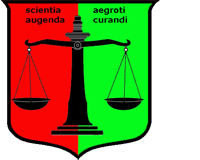Institute for Response-Genetics (e.V.)Chairman: Prof. Dr. Hans H. StassenPsychiatric Hospital (KPPP), University of Zurich |

|


|
The Burden of Incomplete TreatmentsLittle is known about the etiology of major psychiatric disorders, and a diagnostic differentiation based on biological markers or objective laboratory methods is currently not available. Accordingly, it is hardly surprising that only incomplete treatments for these disorders are in use and that there is no cure in the majority of cases. Pharmacological treatment, though effective, is unsatisfactory in the sense that (1) a large proportion of patients (35% - 45%) exhibit a refractory clinical picture which is resistant to all treatment modalities, and (2) the question of predicting treatment response in the individual patient is not answerable for any of the currently available antipsychotics and antidepressants. Etiology of Major Psychiatric DisordersEvidence from twin, family and adoption studies suggests that, ultimately, genetic markers may represent the most important trait-like characteristics in the etiology of major psychiatric disorders. However, genetic predisposition appears to vary across patients and to "explain" no more than 25% to 60% of the observed phenotypic variance, depending on the onset of illness, severity of illness, and long-term course of clinical syndromes. Therefore, genetic predisposition has been conceptualized as acting nonspecifically, by elevating a subject's "vulnerability" (or "sensitivity") to environmental or endogenous challenges. Vulnerability, however, is neither necessary nor sufficient for the development of psychiatric disorders. Mechanisms that Support and Maintain HealthA subject's vulnerability is typically compensated, at least in part, by resilience factors. The term "resilience" is used here as a broader concept than just neurogenesis, encompassing all those intrinsic/endogenous mechanisms that support and maintain health, thereby enabling patients to cope with stressful situations (includes the concept of autotherapeutic capacity). This may include personality traits supporting or impeding social skills. References
Stassen HH, Bachmann S, Bridler R, Cattapan K, Seifritz E. Polypharmacy in Psychiatry and
Weight Gain: Longitudinal Study of 832 Patients Hospitalized for Depression or Schizophrenia,
along with Data of 3,180 Students from Europe, the U.S., South America, and China.
Eur Arch Psychiatry Clin Neurosci. 2024; https://doi.org/10.1007/s00406-024-01767-2
(Epub ahead of print)
[get the article]
Stassen HH, Bachmann S, Bridler R, Cattapan K, Hartmann AM, Rujescu D, Seifritz E, Weisbrod M,
Scharfetter C: Genetic Determinants of Antidepressant and Antipsychotic Drug Response:
A molecular-genetic study of 902 patients over 6 weeks. Psychiatry Res. 2024 [submitted for publication]
Stassen HH, Bachmann S, Bridler R, Cattapan K, Hartmann AM, Rujescu D, Seifritz E, Weisbrod M,
Scharfetter C. Analysis of genetic diversity in patients with major psychiatric disorders
versus healthy controls: A molecular-genetic study of 1698 subjects genotyped for 100 candidate
genes (549 SNPs). Psychiatry Res. 2024; 333: 115720. doi: 10.1016/j.psychres.2024.115720
[get the article]
Stassen HH, Bachmann S, Bridler R, Cattapan K, Herzig D, Schneeberger A, Seifritz E:
Detailing the Effects of Polypharmacy in Psychiatry: Longitudinal Study of 320 Patients
Hospitalized for Depression or Schizophrenia. Eur Arch Psychiatry Clin Neurosci. 2022;
272(4): 603-619
[get the article]
Stassen HH, Bachmann S, Bridler R, Cattapan K, Herzig D, Schneeberger A, Seifritz E. Inflammatory
Processes linked to Major Depression and Schizophrenic Disorders and the Effects of Polypharmacy
in Psychiatry: Evidence from a longitudinal Study of 279 Patients under Therapy. Eur Arch
Psychiatry Clin Neurosci. 2021; 271(3): 507-520
[get the article]
Pollak TA, Lennox B, Müller S, Benros ME, Prüss H, Tebartz van Elst L, Klein H, Steiner J, Frodl T,
Bogerts B, Tian L, Groc L, Hasan A, Baune BT, Endres D, Haroon E, Yolken R, Benedetti F, Halaris A,
Meyer J, Stassen H, Leboyer M, Fuchs D, Otto M, Brown DA, Vincent A, Najjar S, Bechter K: An
international consensus on an approach to the diagnosis and management of psychosis of suspected
autoimmune origin: the concept of autoimmune psychosis. Lancet Psychiatry 2020; 7(1): 93-108
Zhang M, Bridler R, Mohr C, Moragrega I, Sun N, Xu Z, Yang Z, Possenti M, Stassen HH: Early
Detection of the Risk of Developing Psychiatric Disorders: A Study of 461 Chinese University
Students under Chronic Stress. Psychopathology 2019; 52(6): 367-377
[get the article]
Bhake R, Kluckner V, Stassen HH, Russell GM, Leendertz J, Stevens K, Linthorst ACE, Lightman S:
Continuous Free Cortisol Profiles — Circadian Rhythms in Healthy Men. J Clinical Endocrinology &
Metabolism 2019; 104(12): 5935-5947
Stassen HH: Heterogeneity of schizophrenic disorders and link to chronically elevated IgM values.
Neurology, psychiatry and brain research 2018; 29: 23-24
Stassen HH, Braun S, Bridler R, Seifritz E, Weisbrod M: Inflammatory Processes and Schizophrenia:
Evidence from a Twin Study. Eur Neuropsychopharmacology 2017; 27 Suppl 4: S934-S935
Braun S, Bridler R, Müller N, Schwarz MJ, Seifritz E, Weisbrod M, Zgraggen A, Stassen HH:
Inflammatory Processes and Schizophrenia: Two Independent Lines of Evidence from a Study
of Twins Discordant and Concordant for Schizophrenic Disorders. European Archives of
Psychiatry and Clinical Neuroscience 2017; 267: 377-389
[get the article]
Braun S, Annovazzi C, Botella C, Bridler B, Camussi E, Delfino JP, Mohr C, Moragrega I, Papagno C,
Pisoni A, Soler C, Seifritz E, Stassen HH: Assessing Chronic Stress, Coping Skills and Mood Disorders
through Speech Analysis. A Self-Assessment "Voice App" for Laptops, Tablets, and Smartphones.
Psychopathology 2016; 49(6): 406-419
[get the article]
Delfino JP, Barragán E, Botella C, Braun S, Bridler R, Camussi E, Chafrat V, Lott P, Mohr C,
Moragrega I, Papagno C, Sanchez S, Seifritz E, Soler C, Stassen HH: Quantifying Insufficient
Coping Behavior under Chronic Stress. A cross-cultural study of 1,303 students from Italy,
Spain, and Argentina. Psychopathology 2015; 48: 230-239
Mohr C, Braun S, Bridler R, Chmetz F, Delfino JP, Kluckner VJ, Lott P, Schrag Y, Seifritz E, Stassen HH:
Insufficient Coping Behavior under Chronic Stress and Vulnerability to Psychiatric Disorders.
Psychopathology 2014; 47: 235-243
Stassen HH, Delfino JP, Kluckner VJ, Lott P, Mohr C: Vulnerabilität und psychische Erkrankung. Swiss Archives
of Neurology and Psychiatry 2014; 165(5): 152-157
Bridler R, Orosz A, Cattapan K, Stassen HH: In Need of Psychiatric Help – Leave a Message after
the Beep. Psychopathology 2013; 46(3): 201-205
Stassen HH, Anghelescu IG, Angst J, Böker H, Lötscher K, Rujescu D, Szegedi A, Scharfetter C:
Predicting Response to Psychopharmacological Treatment. Survey of Recent Results.
Pharmacopsychiatry 2011; 44: 263-272
Lötscher K, Anghelescu IG, Braun S, Bridler R, Stassen HH: Polypharmacy in psychiatry: clinical practice
versus empirical evidence. Eur Neuropsychopharmacol. 2010; 20 (Suppl. 3): 378-379
Lötscher K, Stassen HH, Hell D, Bridler R: Community-based crisis home programme – cost-efficient
alternative to psychiatric hospitalization. Nervenarzt 2009; 80(7): 818-826
Stassen HH, Anghelescu IG, Braun S, Hoffmann K, Rujescu D, Scharfetter C, Szegedi A, Tadic A:
Vulnerability to major psychiatric disorders, response to treatment and medical comorbidity –
shared genetic factors? Eur Neuropsychopharmacol. 2009; 19 (Suppl. 3): 262
Stassen HH, Angst J, Hell D, Scharfetter C, Szegedi A: Is there a common resilience mechanism
underlying antidepressant drug response? Evidence from 2848 patients. J Clin Psychiatry
Stassen HH, Scharfetter C: Vulnerability, resilience and response to psychotropic drugs:
shared genetic factors? Am J Med Genetics 2006; 141: 707-708
2007; 68(8): 1195-1205
Stassen HH, Scharfetter C, Angst J: Functional Psychoses –Molecular-genetic Evidence for a
Continuum. In: A. Marneros and H.S. Akiskal (eds) The overlap of affective and schizophrenic
spectra. Cambridge University Press 2006; pp. 55-78
Stassen HH, Angst J, Scharfetter C: Genetik affektiver Störungen –der quantitative Ansatz
syndrom-orientierter Modelle. In: M. Leuzinger-Bohleber, S. Hau, H. Deserno (hsg): Depression
–Pluralismus in Praxis und Forschung, Vandenhoeck & Ruprecht, Göttingen, 2005, pp. 219-257
Stassen HH, Scharfetter C: Ethnische Zugehörigkeit und Vulnerabilität am Beispiel der
Affektkrankheiten und Schizophrenien. Die Psychiatrie 2005; 2: 85-95
Stassen HH, Angst J, Scharfetter C, Szegedi A: Therapie mit Antidepressiva: Erfolg von
genetischen Faktoren abhängig? Leading Opinions, Neurologie & Psychiatrie 2005; 6: 25-27
Angst J, Sellaro R, Stassen HH, Gamma A: Diagnostic conversion from depression to bipolar
disorders: results of a long-term prospective study of hospital admissions. J Aff Disorders
2005; 84(2-3): 149-157
Stassen HH: Veränderungen der Sprechmotorik. In: T.Jahn (ed) Bewegungsstörungen bei psychischen
Erkrankungen. Springer Heidelberg 2004: 107-125
Angst F, Stassen HH, Clayton PJ, Angst J: Mortality of patients with mood disorders: follow-up
over 34 to 38 years. J Aff Disorders 2002; 68: 167-181
Angst J, Angst F, Stassen HH: Suicide risk in patients with major depressive disorder. J Clin
Psychiatry 1999; 60,2: 57-62
Angst J, Stassen HH: Methodische Probleme der Prüfung von Antidepressiva. In: Stieglitz RD,
Fähndrich E, Möller HJ (eds): Syndromale Diagnostik psychischer Störungen. Hogrefe, Göttingen
1998: 5-12
Stassen HH, Ragaz M, Reich T: Age-of-onset or age-cohort changes in the lifetime occurrence of
depression? Psychiat Genetics 1997; 7: 27-34
Scharfetter C, Stassen HH: Psychopathological concepts. Psychopathology 1995; 28: 8-12
Stassen HH, Schmid GB, Gross G, Angst J, Huber G: Prädiktoren des langfristigen Verlaufs
schizophrener Erkrankungen. In: G. Huber (ed), Idiopathische Psychosen: Psychopathologie,
Neurologie, Therapie. Schattauer, Stuttgart-New York, 1990: 95-104
Angst J, Stassen HH, Gross G, Huber G, Stone MH: Suicide in affective and schizoaffective
disorders. In: Marneros A. and Tsuang M.T. (eds) Affective and Schizoaffective disorders.
Springer, Berlin-Heidelberg 1990: 168-185
Stassen HH, Scharfetter C, Winokur G, Angst J: Familial syndrome patterns in schizophrenia,
schizoaffective disorder, mania and depression. Eur Arch Psychiatr Neurol Sci 1988; 237:
115-123
Stassen HH, Scharfetter C, Angst J: Morbid risks of subgroups of affective disorders: some
methodological and empirical results. J Psychiat Research 1987; 21: 347-355
Angst J, Bänninger R, Nüsperli M, Scharfetter C, Stassen HH: Syndromale Gruppierungen endogener
Psychosen in genetischer Sicht. In: Perspektiven der Schizophrenie-Forschung, ed: Pflug B.,
Foerster K., Straube E.; Fischer, Stuttgart New York, 1985: 25-38
Angst J, Scharfetter C, Stassen HH: Classification of Schizoaffective Patients by
Multidimensional Scaling and Cluster Analysis. Psychiatria Clin 1983; 16:
254-264
|
|

Mean scores and variation of scales «activity» (x‑axis) versus «defeatism» (y‑axis) as derived from the COPE data of 419 students from Italy (Milano: dark blue), 400 students from Spain (Castellon: red), 407 students from the United States (Pasadena: purple), 484 students from Argentina (Cipolletti: green), 406 Students from the German speaking part of Switzerland (Zurich: light blue), and 401 students from the French speaking part of Switzerland (Lausanne: yellow) after orthogonalization and normalization |
|
| [ Mail to Webmaster ] k454910@ifrg.ch |